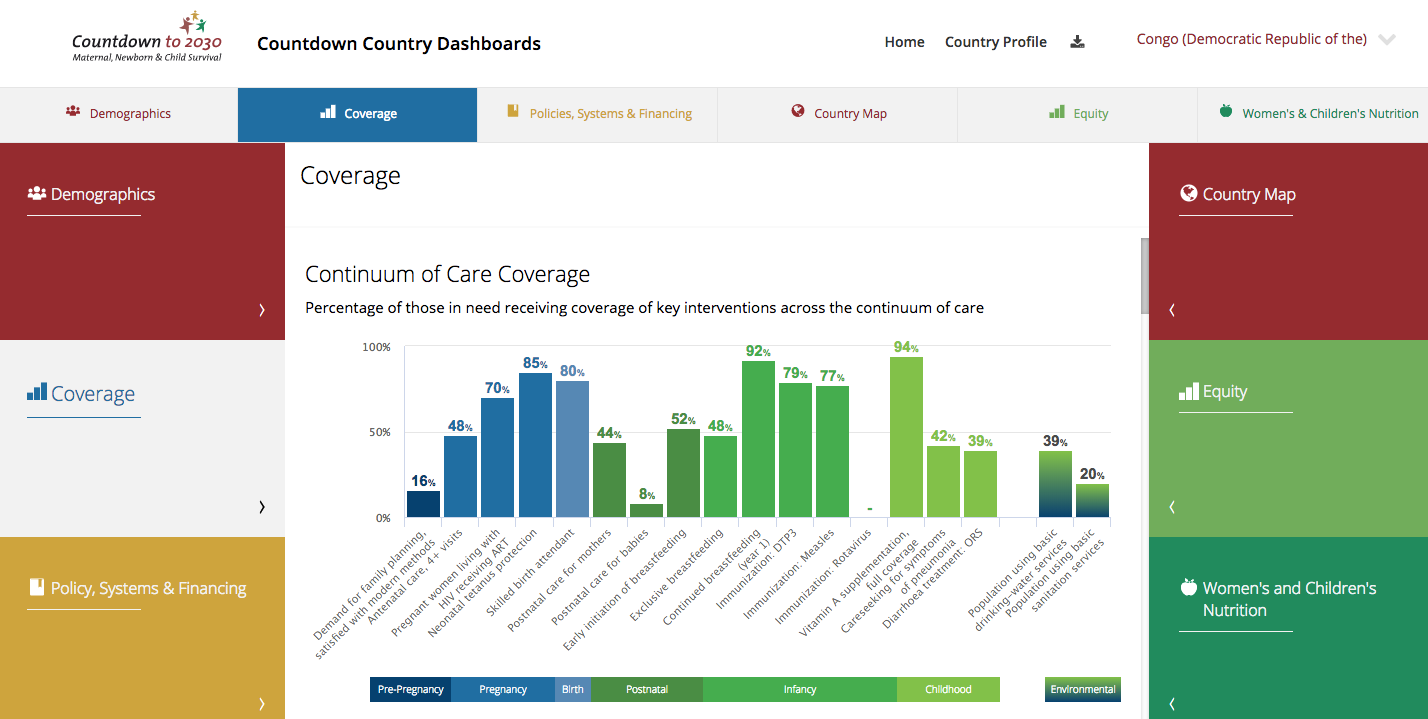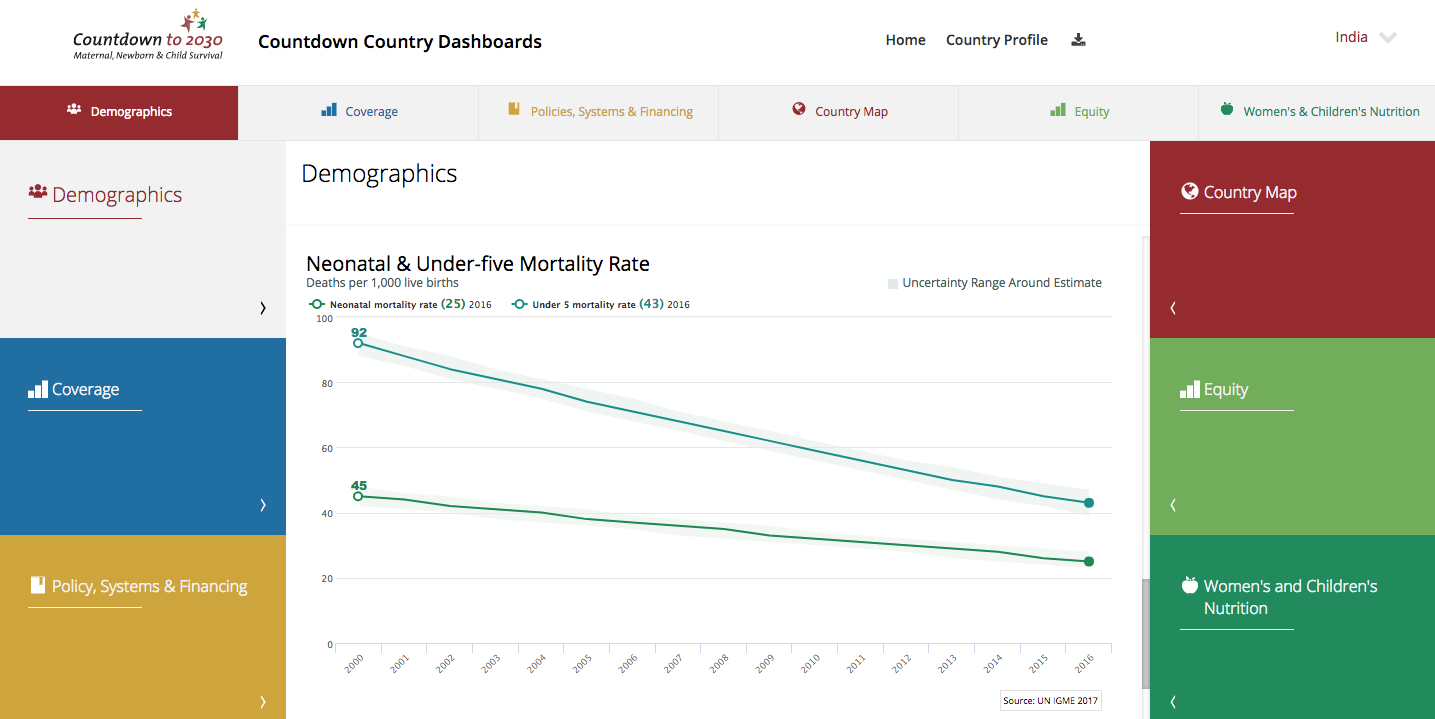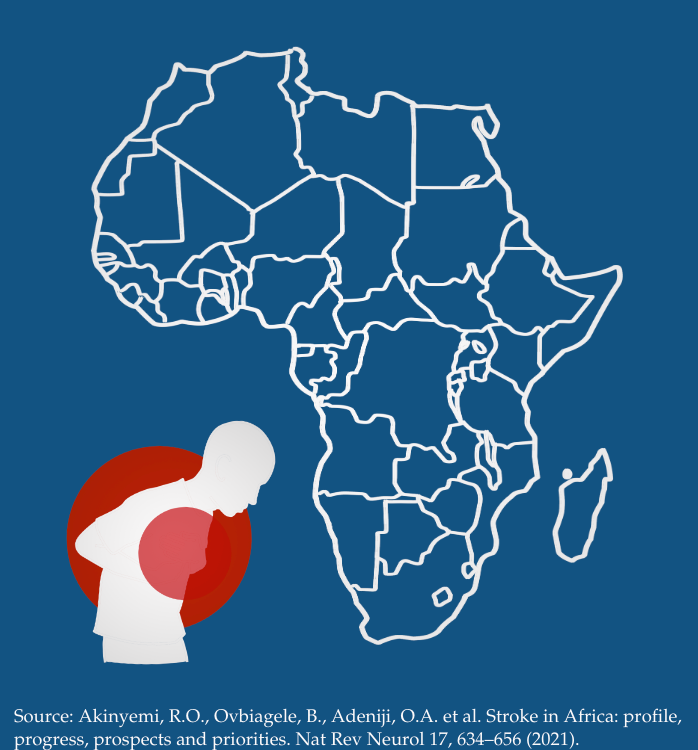Countdown to 2030: Accelerating Momentum towards Ending Preventable Maternal, Newborn, and Child Deaths with UNICEF
DG is pleased to announce the recent launch of the Countdown 2030 Country Dashboards and Profiles. In recent months, we partnered with Countdown 2030 and UNICEF, a Countdown 2030 member, to develop a series of comprehensive dashboards that illuminate progress towards achieving Sustainable Development Goal (SDG) 3, Good Health and Wellbeing, which calls for the end of preventable maternal, newborn, and child deaths. The Dashboards and Country Profiles visualize data that is provided through an API serviced by UNICEF.

Countdown to 2030 Country Dashboards
The Countdown to 2030 Country Dashboards and Profiles project targets 81 focus countries, which alone account for 90% of child deaths and 95% of maternal deaths throughout the world. As for the dashboards themselves, each one is clear, compelling, and capable of visualizing over 130 Tier 1 and Tier 2 public health indicators, which are organized into seven encompassing key areas:
-
Demographics;
-
Coverage;
-
Policy;
-
Systems & Financing;
-
Equity;
-
Women’s and Children’s Nutrition;
-
A specific Country Map for each dashboard, displaying the subnational Composite Coverage Score (a weighted average of the coverage of eight types of interventions).
Zeroing in on just how critical local usability and usefulness really are, the dashboards also include specific indicators that allow users to track and compare country progress towards achieving the SDGs to the regional average. Additionally, in order to ensure data shareability and access across many formats, print-friendly country profiles are available for each country.

Demographics Dashboard
These high-quality and individualized Dashboards and Profiles are a leading initiative to accelerate momentum towards the Countdown to 2030 goal of:
“increas[ing] public and policy attention to reproductive, maternal, newborn, child and adolescent health and nutrition; strengthen[ing] country and regional capacity to [assess, analyze, and use] data for evidence-based action; and to improv[ing] the quantity and quality of data, as national and regional leaders become more aware of its importance and of current data gaps.”
Setting forth clear concepts of how users interact with their data, and a modern, dynamic front end, the Countdown to 2030 Dashboards and Country Profiles are combating one of the most pressing challenges SDG 3 aims to solve.
The Countdown to 2030 Project Team includes Diego Dimunzio, Mauricio Bertoli, Liliana Mercado, Galina Kalvatcheva, Taryn Davis, Martha Staid, and Llanco Talamantes.
Share This Post
Related from our library

The Cancer-Tobacco Link: Using Data to Drive Stronger Tobacco Control Policies
As we observe World Cancer Day today, it is crucial to recognize the significant role smoking plays in the global cancer epidemic. Tobacco use is the leading preventable cause of cancer and cancer-related deaths worldwide, necessitating a dynamic, multidisciplinary approach to tobacco control interventions. DG’s Tobacco Control Data Initiative (TCDI) contains country-specific websites designed to

Diving into the DaYTA Program’s Data Collection Process
This blog explores key insights from the DaYTA program, offering practical guidance for researchers on effective data collection, overcoming field challenges, and leveraging local partnerships to enhance tobacco control efforts. This piece is especially timely following DaYTA’s workshop convening all 3 study country stakeholders to review the survey results and strategize on how best to disseminate this data to target audiences. This workshop took place from in Lagos, Nigeria, from November 18-20th.

More Smoke, More Stroke
In honor of this year’s World Stroke Day, observed annually on October 29th, this piece aims to raise awareness of the substantial burden of non-communicable diseases–particularly stroke incidents–using the case study of Nigeria, one of the main tobacco production hubs on the continent, in addition to Kenya.